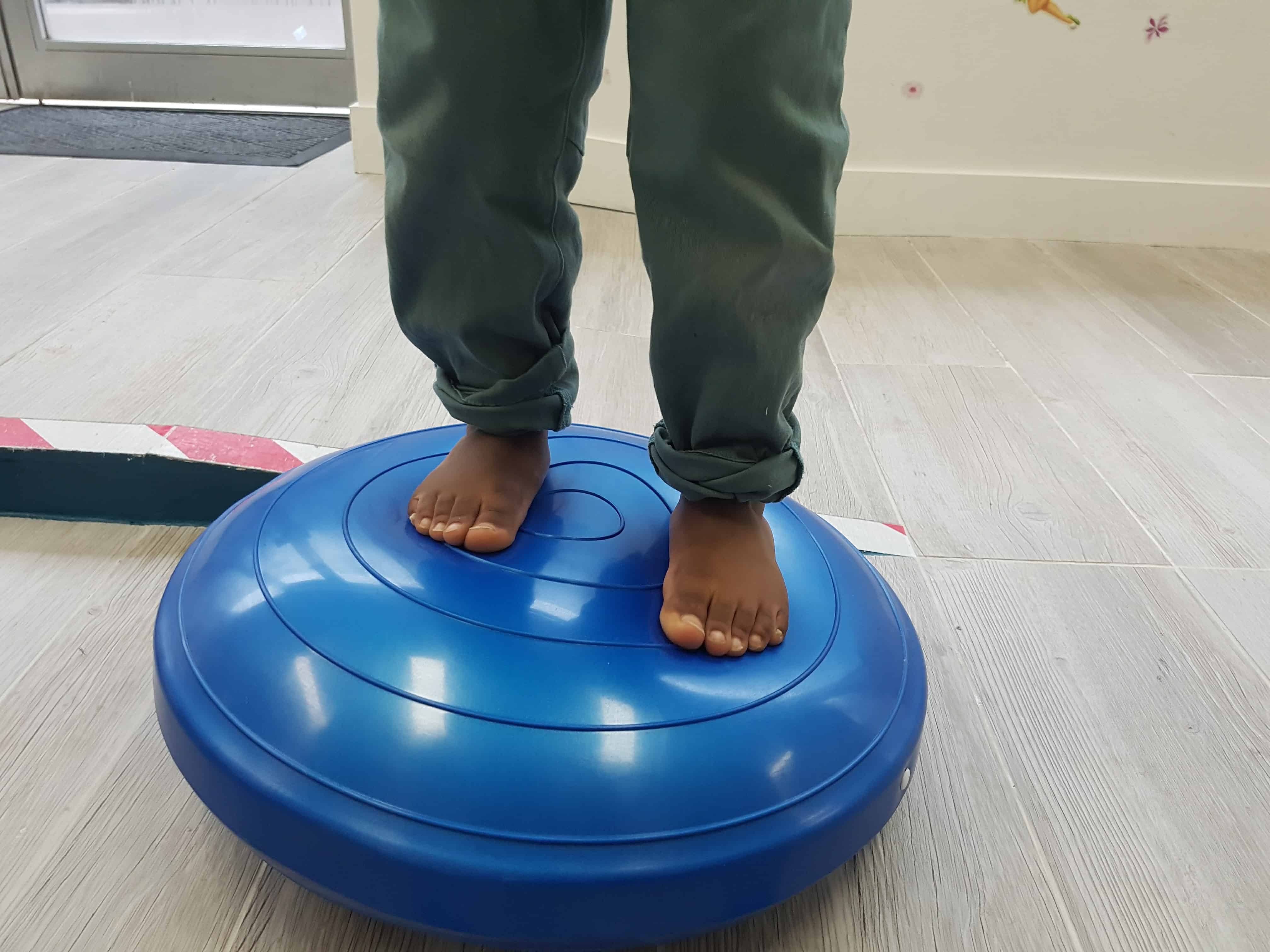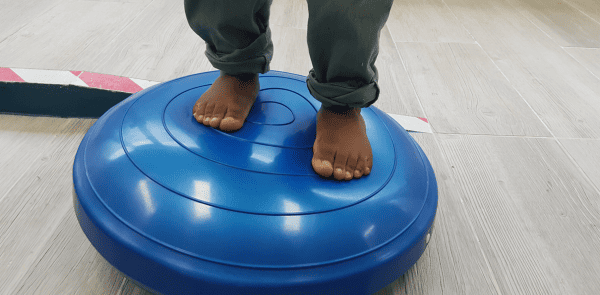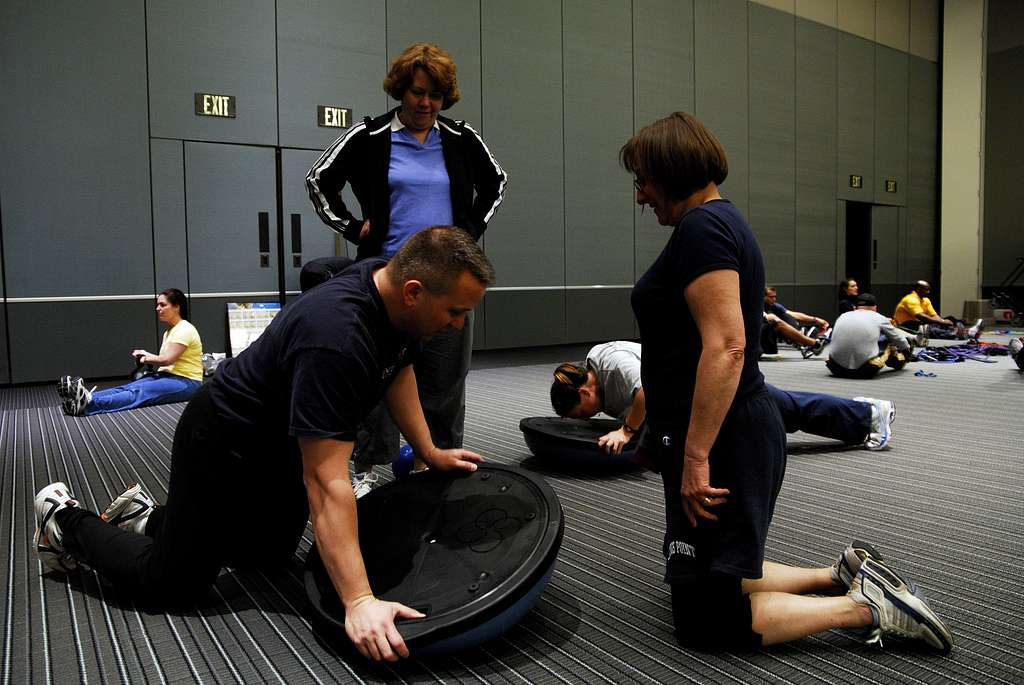Are you looking to enhance your balance, stability, and overall physical fitness? If so, you’ve come to the right place. In this guide, we’ll introduce you to the world of wobble boards. Read on and discover how they can take your workout routine to the next level!
Wobble Boards
Wobble boards are fitness equipment designed to improve balance, stability, and core strength. They consist of a circular or rectangular board with a rounded bottom underneath. The unstable surface challenges your body’s balance. Stepping or placing your hands on it forces your muscles to engage to maintain stability. Hence why it is also known as balance boards.
In the market, you’ll find various types to suit different needs and preferences. Traditional wobble boards feature a single fulcrum in the centre. Such a design offers a moderate level of instability. Alternatively, you can opt for wobble boards with multiple fulcrums. Or for adjustable designs that allow you to customise the level of difficulty. Most boards also come with grip enhancements for added safety and stability.
Using a wobble board as part of your fitness routine offers numerous benefits. First, it helps improve your overall balance and proprioception. This, in turn, can enhance athletic performance and reduce the risk of falls and injuries.
Next, wobble board exercises engage your core muscles. This promotes better posture, stability, and spinal alignment. Additionally, incorporating a wobble board into your workouts:
- challenges your coordination
- strengthens smaller stabilising muscles
- boost your concentration and focus
Adding a wobble board to your fitness arsenal is worth a shot, and it can be exciting! You’ll unlock a new dimension of training that targets your balance, stability, and core strength. Overall, it enables you to reach your fitness goals more effectively.
Getting Started
To start, you need to choose the right wobble board for your needs and fitness level. If you’re a beginner, opt with a wobble board that offers moderate stability. As you progress, you can opt for boards with increased instability.
Various types of wobble boards are available and the common ones are for:
- Rehabilitation
- Balance training
- Advanced exercises
Determine which one your wobble board is designed for. Remember, different boards cater to different needs.
Next, you need to prepare the space and ensure safety before using the wobble board:
- Make sure you have enough space around you to move freely without any obstructions. Remove rugs, furniture, or any other items that could interfere with your movements.
- Place the wobble board on a stable, non-slip surface such as a yoga mat to prevent slipping accidents.
- When starting out, have a sturdy object nearby, like a chair or wall, to grab onto if you lose balance.
To get on the board and find your balance, you may follow these steps:
1. Position yourself near the board
Stand beside the wobble board with your feet hip-width apart.
2. Step onto the board
Place one foot onto the board, finding stability with your toes and the ball of your foot. Keep your weight centred.
3. Lift the other foot
Slowly lift your other foot off the ground. Bring it onto the board beside your supporting foot.
4. Find your balance
Engage your core muscles and focus on maintaining an upright posture. Start by keeping both feet flat on the board. Then gradually progress to shifting your weight and performing controlled movements.
Remember, it’s normal to feel unstable at first. Take your time, be patient, and listen to your body. With consistent practice, you’ll improve your balance and confidence.
Safety Precautions and Tips
 (Image Credit: Wikimedia Commons)
(Image Credit: Wikimedia Commons)
Important safety tips to prevent injuries while using a wobble board:
- Start slow: Begin with basic exercises. Then, you may gradually progress to more challenging movements as your balance improves.
- Use proper footwear: Wear supportive athletic shoes with good traction to prevent slipping.
- Maintain proper form: Keep your posture upright and engage your core muscles. Avoid leaning too far in any direction to prevent falls.
- Use a spotter if needed: New to using a wobble board or attempting advanced exercises? Have a friend or trainer spot you for added safety.
Recommended duration and frequency of wobble board training:
- Begin with 5-10 minutes of wobble board exercises per session. Then, gradually increase the duration as you build strength and stability.
- Aim for 2-3 sessions per week initially. As you become more comfortable, you can increase the frequency to 4-5 sessions per week.
- Pay attention to any discomfort or excessive strain. It’s important to give your body time to rest and recover between sessions.
Consult with a healthcare professional if you have concerns:
If you have medical conditions or injuries, consult with your healthcare provider. This will help ensure using a wobble board is safe for you. The same goes if you have concerns that may affect your ability to use the board effectively and safely.
Remember, prioritising safety is crucial when using a wobble board.



 (
(